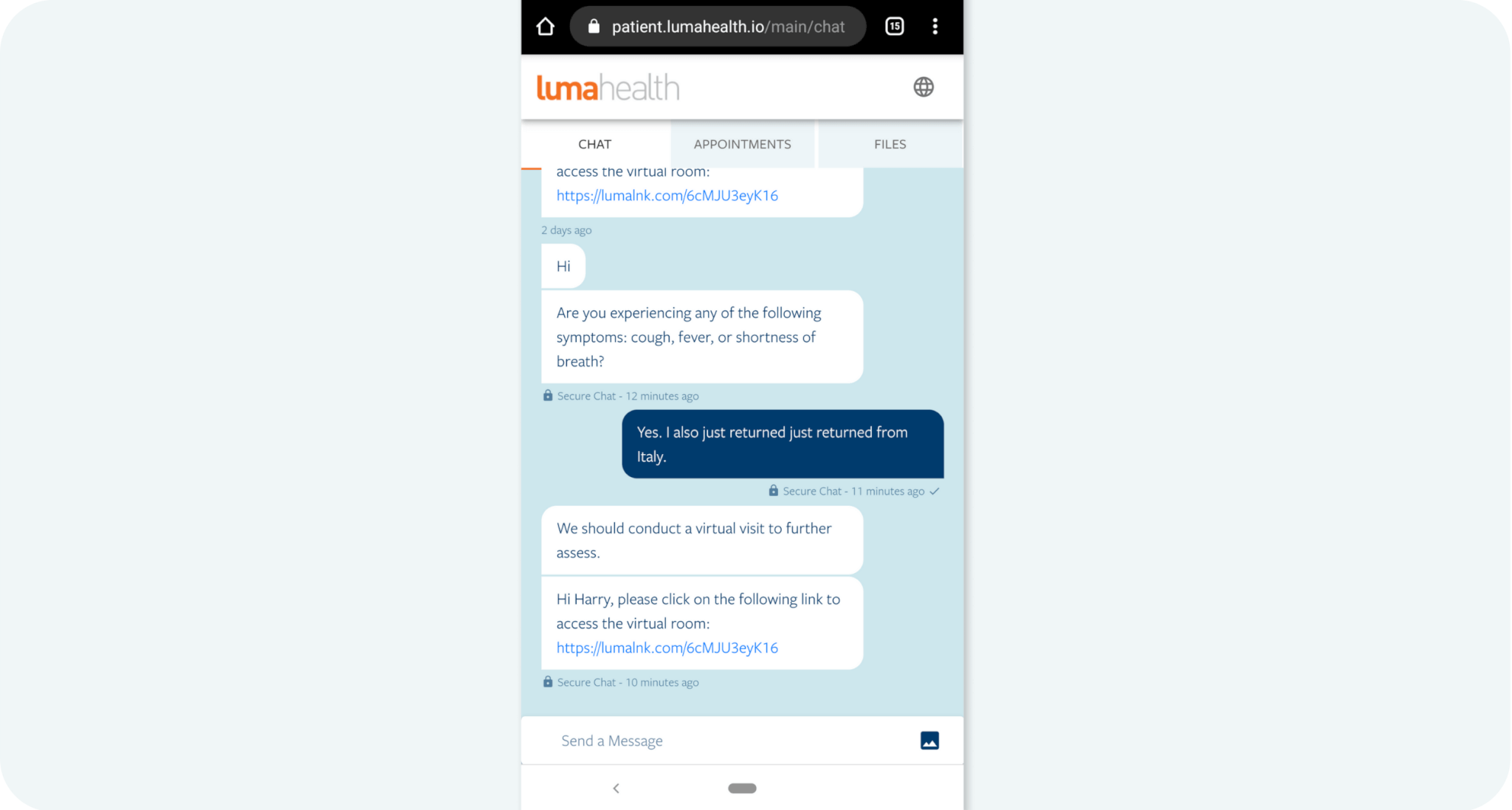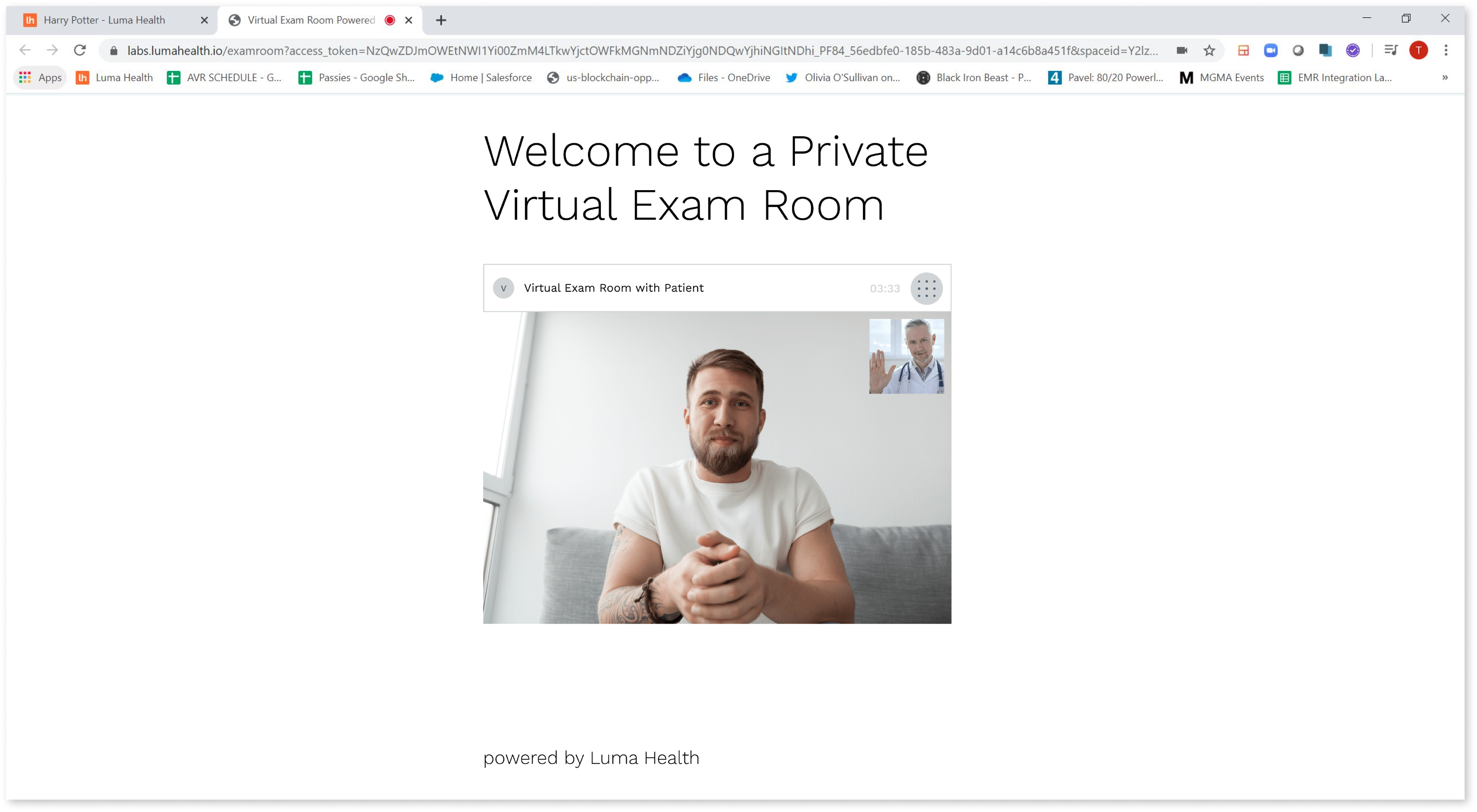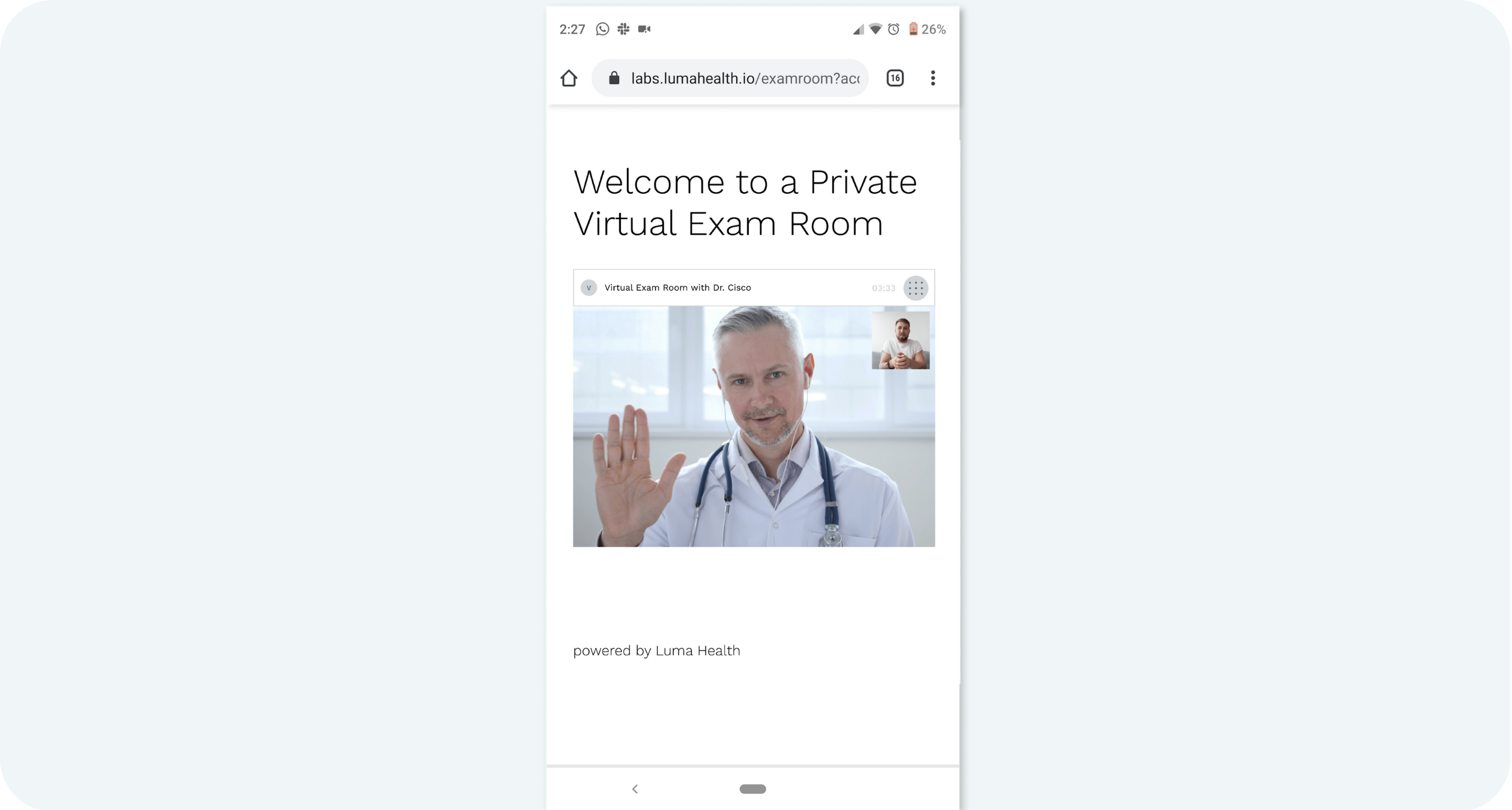We know many of our clinics, partners, and their patients are currently struggling with how to manage the COVID-19 coronavirus global pandemic. We’ve put together a few resources to help the healthcare community at large best use patient communication and engagement as a way to navigate this challenging time.
The core of this strategy is a three-pronged approach using Luma Health’s patient engagement platform to educate patients about COVID-19 coronavirus, identify infected patients, and treat them as needed.
1. Educate – Communicate with all patients – including patients who have not been recently seen – to help share best practices, keep patients healthy, and address any misconceptions. Our clients can use Luma Health’s Broadcast product to deliver this essential education via text, voice, and email.
2. Identify – Of the entire patient population under the care of a clinic, a subset of patients may experience symptoms that represent a COVID-19 infection. It is of the utmost importance to determine which of these patients have a more common illness such as the flu, and which patients are infected with COVID-19. Our clients can use Luma Health’s Mobile Patient Intake to identify and triage infected patients. In certain parts of the U.S. where the virus is more widespread, we recommend broader screening.
3. Treat – Patients who are identified as candidates diagnosed with COVID-19, need to be triaged appropriately. We are offering on-demand telehealth visits via the Luma Health Total Patient Engagement Platform ™ to ensure providers can immediately connect with and triage these patients so they receive care as soon as possible. Providers and care teams can also use Luma Health’s Collaboration Hub to immediately coordinate next level care for infected patients.

Healthcare professionals, we want to hear from you. If you work in healthcare, click this link, take our 10-minute survey, and get entered in our giveaway for a Core Meditation Trainer.
Here are specific recommendations for deploying the three-pronged approach to patient communication:
Here are four key goals when educating patients under your care:
Clearing Up Confusion and Misinformation Given the degree of confusion and resulting hysteria, we recommend reaching out to every patient on your roster, even the patients who have not been seen in your clinic for several years.
As healthcare providers, we should take a proactive approach in dispelling myths and keeping patients safe. The message you send to patients should contain reference to a reliable resource and advice on prevention.
SAMPLE MESSAGE: “YOUR CLINIC NAME Cares: In this time of confusion, we want to help share reliable information on how to stay healthy. Please read the following from the CDC: https://www.cdc.gov/coronavirus/2019-ncov/prepare/prevention.html”
To facilitate this essential patient communication, we are making the Luma Health Broadcast product available at no cost to any clinic or health system through April 15. This tool can ingest a list of patients from your EHR. If you’re interested, you can learn more about this offer here (existing clients should contact their Customer Success Manager – they’d be happy to help).
Conveying Extended Healthcare Services During Outbreak Clinics are currently experiencing an influx of patient inquiries, particularly if they think they have been exposed to COVID-19, develop a fever, and have symptoms. If your clinic is offering special services such as a dedicated nursing line, telehealth visits, or in-person evaluations for patients who are potentially infected, it’s essential to communicate the services to patients.
We recommend setting up a dedicated web page outlining your extended services and sharing the link to the page with your patients. If you are not offering any special services, it will be beneficial to share free services that may be available to your patients via other local organizations. For example, Multicare in Seattle is offering free virtual visits and screening tools.
SAMPLE MESSAGE: “If you are experiencing symptoms that may represent a coronavirus (COVID-19) infection, we recommend getting evaluated immediately via a free virtual visit with Multicare: https://www.multicare.org/coronavirus/”
Communicating Preventive Care to High-Risk Patients Patients at higher risk of complication and death from COVID-19, include those who:
- Have chronic diseases such as diabetes or emphysema.
- Suffer from immunosuppression – from cancer treatments or a transplant, for example.
- Are 60 years of age or older.
High-risk patients need to be made aware of the fact that they are at greater risk should they become infected with COVID-19. They also need to be informed of the additional precautions required of them during the outbreak. Luma Health’s Total Patient Engagement Platform™ enables you to build logic into messaging templates for your clinical workflows. For example, you can identify patients with high-risk conditions and automatically send tailored messaging to each subset of patients.
SAMPLE MESSAGE:“ , given your history, you are at higher risk of getting a complication if you were to get sick with the novel coronavirus. We recommend you take extra precautions during the outbreak by doing your utmost to avoid contact with others. Please click here for more details.”
Educating Scheduled Patients Rethink appointment reminders. If you currently send out appointment reminders, you understand the importance of these automated messages. Consider maximizing these messages to communicate more than just the time and date of appointments. During the outbreak, this can be as simple adding a sentence and a link to information about COVID-19.
SAMPLE ADD-ON SENTENCE: “If you are concerned about COVID-19, please read here for additional information: link to the CDC”
Taking a proactive approach to identifying patients who may be infected with COVID-19 is essential, as this is the most effective way to slow the spread of COVID-19. Screening recommendations include:
General Screening If you are located in an area where infection rates are higher, such as Washington or California (as of March 14, 2020), it is prudent to cast a wide net and screen all of your patients. The following message template can be used to triage patients and direct those who are experiencing symptoms of the infection to contact your office.
SAMPLE MESSAGE: “You are living in a high-risk area for Coronavirus. If you are experiencing shortness of breath, cough, or fever, please call us immediately at . In the interim, please avoid contact with others.”
Alternatively, you can use a Luma Health online survey to help screen patients. Plus, a short questionnaire can help further reduce call volumes. Patient surveys are completely customizable and can be adjusted as your screening needs change. CLICK TO VIEW SAMPLE FORM
SAMPLE MESSAGE: “You are living in a high-risk area for the novel coronavirus. To help us take better care of you and prevent unnecessary complications, please fill out this short questionnaire.
Each of these essential patient communication tools can be shared en masse using Luma Health’s Broadcast product. Our technology platform automatically collects patient responses and helps triage those who require further evaluation.
Targeted Screening The approach described above may not be necessary in regions where the outbreak is still limited. However, given how deadly COVID-19 can be, we recommend screening your high-risk patients for developing complications, such as those with chronic conditions, immunocompromised, and anyone age 60 or older. The Luma Health messaging service allows you to sub-select patients based on criteria that you define, making it easy to only offer screening to high-risk patients.
Taking a proactive approach to identify patients who may be infected with COVID-19 is essential.
Screening of Scheduled Patients If you are currently delivering automated appointment reminders, we suggest the adding the following sentence to your reminder messages.
SAMPLE ADD-ON SENTENCE:“If you have a cough, fever, and difficulty breathing, please call to speak with a nurse.”
By making this simple change, you can reduce the unnecessary spread of infection. To minimize incoming phone calls from patients, you can digitize the screening process for scheduled patients by providing them with a link to the online survey mentioned in the first point above.
SAMPLE ADD-ON SENTENCE:“If you have a cough, fever, and difficulty breathing, please please fill out this short questionnaire.”
Screening of Patients Being Scheduled When scheduling patient appointments, we recommend incorporating the following three questions into the phone scripts for your call center staff and to any online scheduling solutions you leverage, such as Luma Health’s Patient Scheduling+ solution:
- Have you traveled to China, South Korea, Japan, or Italy since February 15, 2020?
- Have you been in contact with an individual who was diagnosed with COVID-19?
- Do you have a fever greater than 100.4, a cough, or difficulty breathing?
If a patient answers, “Yes,” to any of these questions, we recommend incorporating follow-on language encouraging patients to postpone visits when possible. For patients who require necessary treatment, continue with the scheduling script but activate the incident management response plans your clinic has in place.
When patients test positive for COVID-19, it’s important to effectively treat and keep them from being exposed to others.
Symptom Tracking and Coordinating Care Patients with a lab-confirmed diagnosis of COVID-19 not requiring hospitalization need to be quarantined. However, keeping a close eye on these patients can be a challenge. To aid in coordinating care, clinics can use Luma Health’s Collaboration Hub to exchange information and regularly check-in with quarantined patients. The Hub also allows patients to reach out to your clinic via SMS when they have questions, need prescriptions, or have worsening symptoms that require next-level care.
Messaging templates can be set up in the Hub to help your staff quickly address questions that arise from patients, even if they do not have an active infection. Templates can also be set up to deliver questions to patients using text messaging. This mobile-first approach streamlines patient communication and makes it easy for patients to respond and get the care they need quickly, without overwhelming your staff.
Luma Health’s Mobile Patient Intake can be used to automate regular check-ins with patients, asking them questions to determine whether symptoms are progressing. Using this approach to engage with quarantined patients can help prevent unnecessary hospitalizations, while ensuring patients who need acute care are triaged quickly. Patient questionnaires can be automatically shared with patients over text messaging. Patient responses are automatically sorted and prioritized by Luma Health’s Total Patient Engagement Platform™, with responses requiring attention tagged for clinic staff to triage.
On-Demand Telehealth Use Luma Health’s Collaboration Hub to coordinate on-demand telehealth visits. The service can be used to exchange link access to the virtual room thus leveraging your existing telehealth partner.
If your clinic does not already have a telehealth provider, you can leverage our partnership with Cisco WebEx to get free access.
For symptomatic patients who may have COVID-19, or patients with a high-risk profile for experiencing complications from the disease, Luma Health is offering free, on-demand telehealth services leveraging Cisco WebEx.
Clinics can leverage Collaboration Hub to communicate and coordinate telehealth visits. Luma Health will set up the templates and create dedicated visit rooms to facilitate the interaction. To drive ultimate access, these interactions will not require installation of any software for the providers or patients.
The workflow is described below:




This is a trying time for all healthcare professionals from clinical staff, to administrators, to providers, to admin staff, and beyond. Simple, effective patient communication can help manage your patients’ fears, while ensuring they can seamlessly access care.
We’re here to help your clinic give peace of mind to your patients and their loved ones. Let’s all pull together during this time of need. Stay safe, stay healthy.










